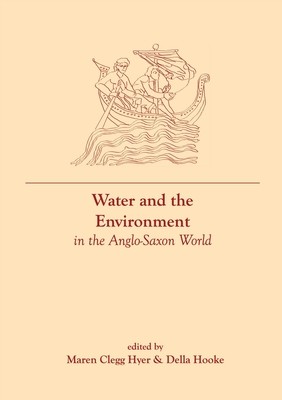
- We will send in 10–14 business days.
- Publisher: Liverpool University Press
- Year: 2017
- ISBN-10: 1786940280
- ISBN-13: 9781786940285
- Format: 17.3 x 24.6 x 2.5 cm, hardcover
- Language: English
- SAVE -10% with code: EXTRA
Water and the Environment in the Anglo-Saxon World (e-book) (used book) | bookbook.eu
Reviews
Description
Water and the Environment in the Anglo-Saxon World, third volume of Daily Living in the Anglo-Saxon World, continues to introduce students of Anglo-Saxon culture to aspects of the realities of the environment that surrounded Anglo-Saxon peoples through reference to archaeological and textual sources. Similar in theme and method to the first and second volumes, the collected articles of Water and the Environment in the Anglo-Saxon World illuminate how an understanding of the impact of water features on the daily lives of the people and the environment of the Anglo-Saxon world can inform reading and scholarship in Anglo-Saxon studies. In discussing fishing, for example, we might ask, in what ways did fish and fishing locations impact the life of the average person living in those areas within the period? How would it impact those persons' diets, livelihood, and religious obligations; how would fish impact the social and cultural structures for those who lived near the water
features of fishing? Study of the impact of water features on the daily lives of the people and the environment of the Anglo-Saxon world will assist serious students of the Anglo-Saxon period in both perceiving and understanding the imagery of material culture in the archaeology and textual materials of the period.
EXTRA 10 % discount with code: EXTRA
The promotion ends in 19d.00:44:14
The discount code is valid when purchasing from 10 €. Discounts do not stack.
- Publisher: Liverpool University Press
- Year: 2017
- ISBN-10: 1786940280
- ISBN-13: 9781786940285
- Format: 17.3 x 24.6 x 2.5 cm, hardcover
- Language: English English
Water and the Environment in the Anglo-Saxon World, third volume of Daily Living in the Anglo-Saxon World, continues to introduce students of Anglo-Saxon culture to aspects of the realities of the environment that surrounded Anglo-Saxon peoples through reference to archaeological and textual sources. Similar in theme and method to the first and second volumes, the collected articles of Water and the Environment in the Anglo-Saxon World illuminate how an understanding of the impact of water features on the daily lives of the people and the environment of the Anglo-Saxon world can inform reading and scholarship in Anglo-Saxon studies. In discussing fishing, for example, we might ask, in what ways did fish and fishing locations impact the life of the average person living in those areas within the period? How would it impact those persons' diets, livelihood, and religious obligations; how would fish impact the social and cultural structures for those who lived near the water
features of fishing? Study of the impact of water features on the daily lives of the people and the environment of the Anglo-Saxon world will assist serious students of the Anglo-Saxon period in both perceiving and understanding the imagery of material culture in the archaeology and textual materials of the period.


Reviews